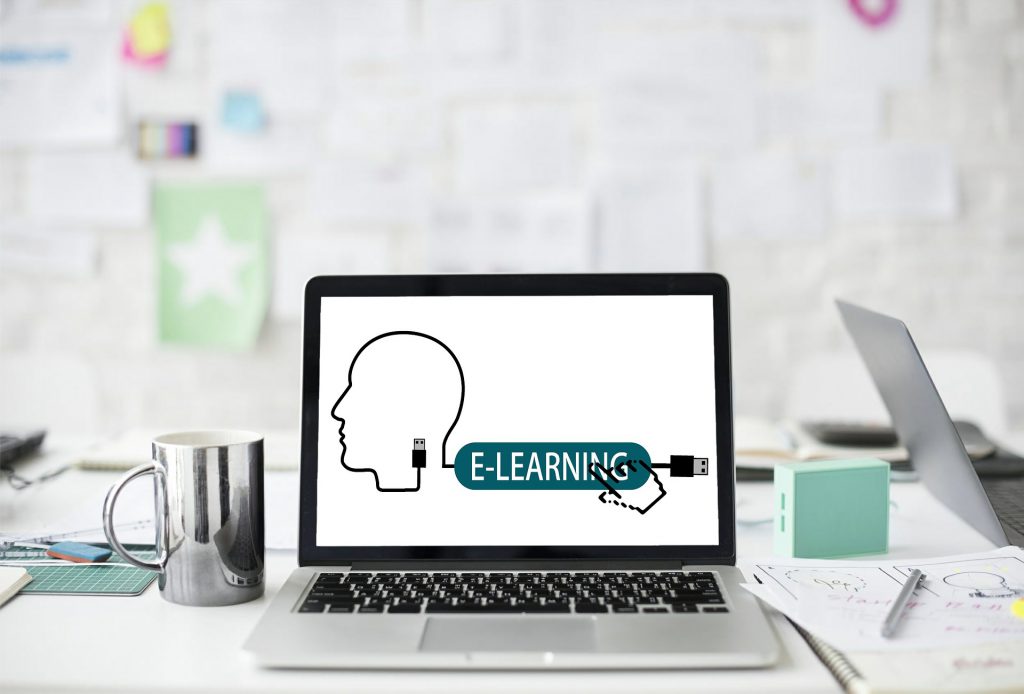MPS Using Remote and Virtual Education
It's become an important part of educational programming. Part 2 of a series.
During the COVID-19 pandemic, Milwaukee was doing remote education longer than any other Wisconsin district. Now most students in Milwaukee and across Wisconsin have returned to in-person learning, but remote and virtual education continue and are likely to increase.
Credit recovery programs ballooned nationally in less than 10 years, but earned a bad reputation in the winter of 2015-16 when Los Angeles students raced through virtual computer programs to recover credits from classes they were failing. But instead of actually learning the material, many students just headed to the final exit exam, memorized the answers they got right and kept on retaking the test until they passed. Soon, school officials and even universities started asking questions whether the passing scores really meant anything.
In a May 2017 publication of the Wisconsin Association of School Boards, Wisconsin School News, Milwaukee Public Schools was highlighted as a system that got ahead of any scandal. Program implementer, Will Luedtke, stated that Milwaukee monitored whether students were actually going through all of the lessons and looked at the required projects and essays to ensure that students were actually learning the material.
Milwaukee Virtual Program
MPS has continued its credit recovery program and, in Fall 2021, began the Milwaukee Virtual Program (MVP) for all students under the direction of that same Will Luedtke.
MVP was partly established to fill a need for virtual education during the pandemic. But the program also served a long-recognized need for a group of students who always needed an alternative to regular classroom instruction.
The MVP secondary program serves a wide range of students from grade 6 to 12:
- Students seeking dual enrollment to obtain high school credits.
- Homebound and home-based learners.
- Children with specific learning needs.
- Students trying to balance complex schedules.
- Families who face challenges with day-to-day attendance.
- Teen parents.
MVP works with Wisconsin Virtual School (WVS) and uses the standards and techniques that WVS has developed over its 20 years of providing virtual education to school districts and students. WVS is considered an expert in how to use virtual education effectively.
MVP offers over 70 courses ranging from Advance Placement, to world language, to credits for students who struggle in a traditional setting.
MVP is not a school but a program. Schools that enroll their students into MVP are given full credit in funding for those students. However, the data for those students appear on the state report card as if they are students at Obama K-12 school. In the 20-21 school year, Obama listed only enrolled 639 students. The next year those numbers jumped to 1,965.
Disaggregating and analyzing the data for MVP from the regular Obama program is difficult for anyone outside the district. But beyond that, MVP services a wide range of nontraditional students, from those who are high achievers to school dropouts, which can complicate the data.
Enter a Chicago Program
This fall, MPS contracted with Elevate K-12 out of Chicago to provide remote instruction to several schools that were short licensed teachers in certain subject areas.
The Elevate program is not a true virtual, but a remote educational experience (even though the company uses the term virtual in its presentation). The instructor appears on a large video screen while the students are seated in the classroom. Another teacher or paraprofessional monitors the students while the onscreen teacher conducts the lesson.
During the pandemic, this form of remote learning was being used because students were not able to attend school in-person in order to prevent the spread of the COVID-19 virus. Now this technique is being used with the students in attendance and the teacher instructing remotely.
The website for Elevate K-12 links to several news reports on its programs, not all of it adulatory. In one by NBC, the video shows an old-style lecture format with students in straight rows listening to a teacher. Susan Moore Johnson of the Harvard Graduate School of Education is shown questioning the quality of this form of remote education. She states that there is so much more that goes on in a classroom than the teacher’s presentation, that the teacher/student bond is crucial and difficult to establish remotely. But Elevate says it offer two-way communications between the students and teacher in a form of electronic classroom discussion. Students can privately communicate with the teachers electronically. The video shows a student focus group. Half the students like the Elevate format; half the students would prefer face-to-face in the classroom.
The real advantage of Elevate is that it offers licensed teachers with expertise in the subject areas rather than the district relying on substitute teachers or those with emergency licenses. MPS reports it is using 40 remote teachers in 13 middle and high schools. In total, 167 class periods are being conducted through Elevate-12.
It is too early to determine how effective the Elevate program is for MPS. Nicole Armendariz, MPS director of communications and marketing, states that the district will evaluate the program results to determine whether to expand the program next year.
“As we continue to recruit for professional staff,” she says, “we will transition classrooms accordingly for full in-person teaching and learning.”






















